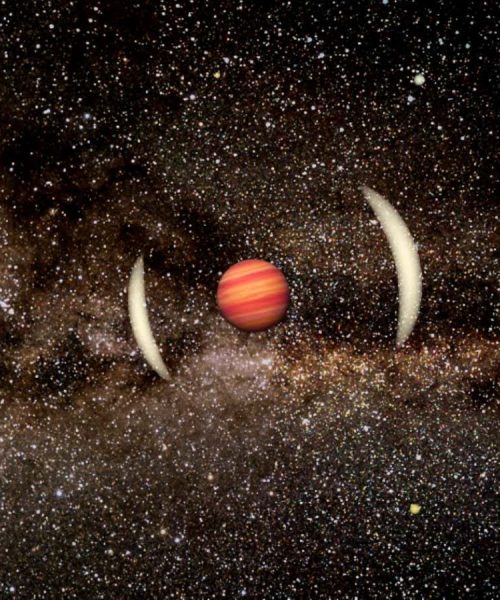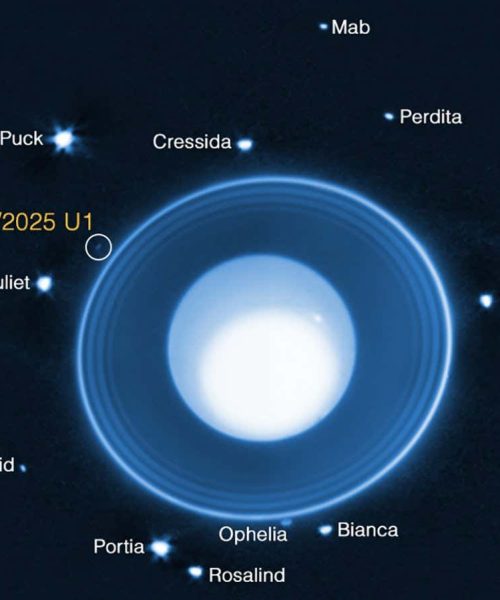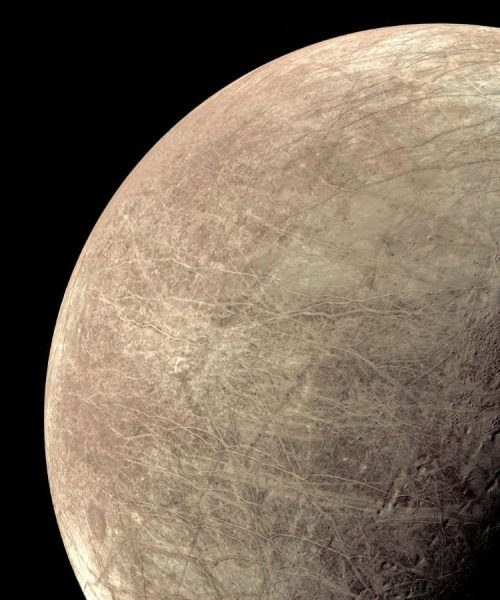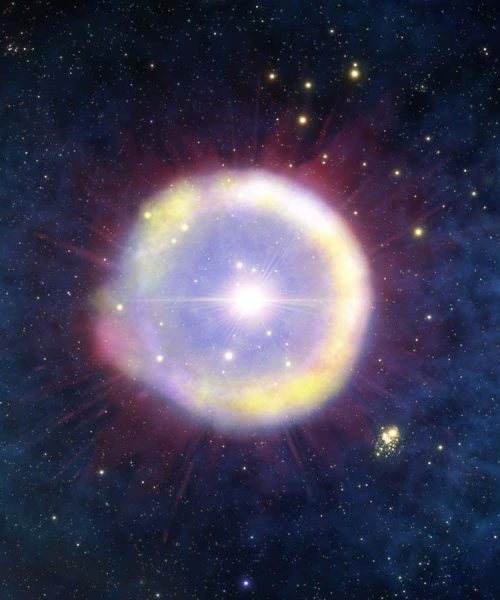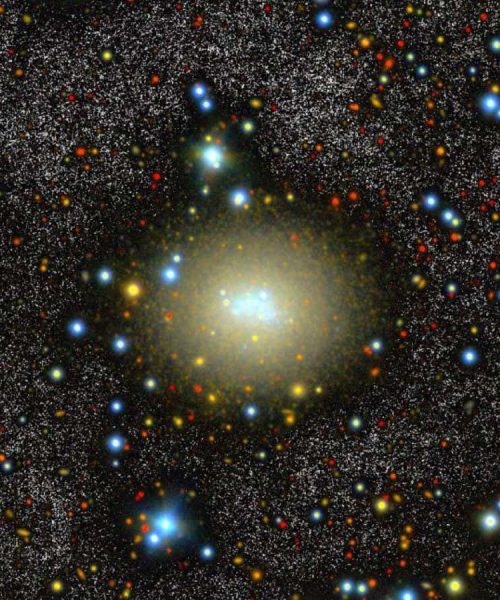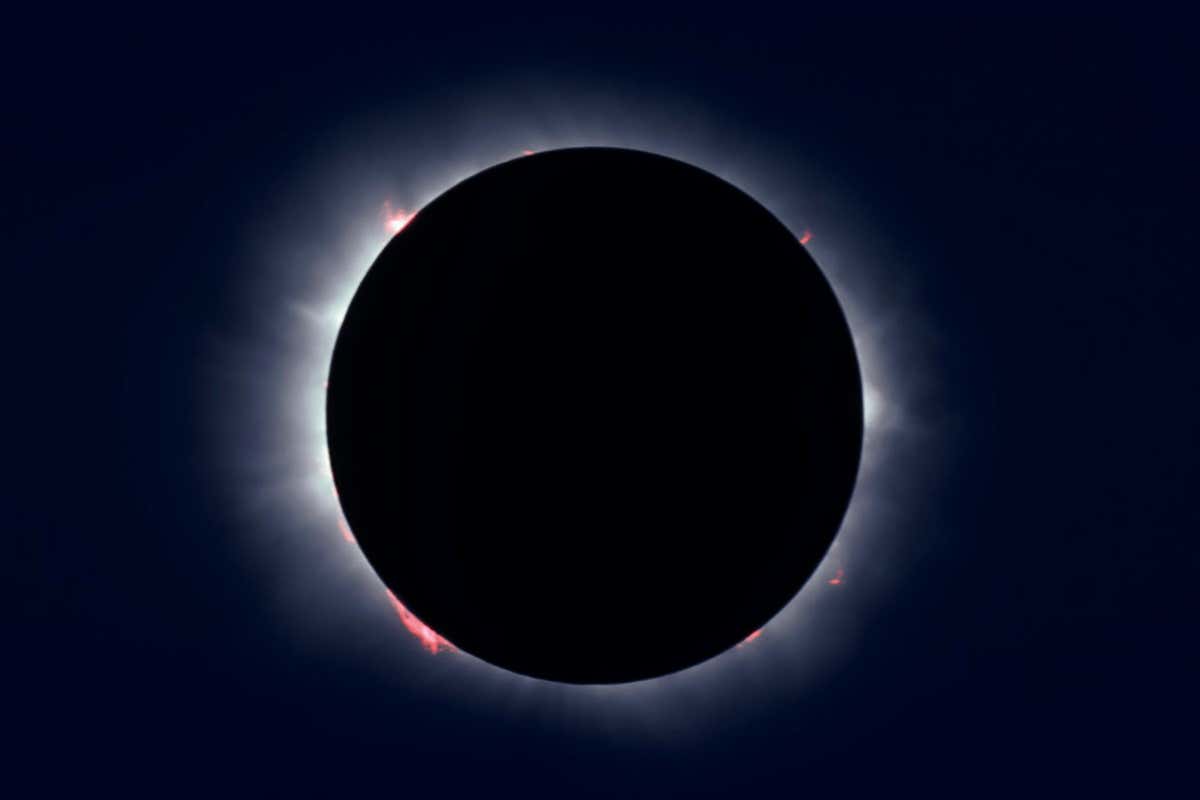
Pink streaks called prominences appear during a total eclipse
Alan Dyer/Stocktrek Images/Getty Images
There is no experience in life like witnessing a total eclipse of the sun. For a few moments, the sky goes dark, the air gets cold and the stars come out in the middle of the day. Some people will go through life never seeing one, but eclipse chasers like me can’t get enough.
The thrill of anticipating the next total eclipse comes from the fact that each one is totally unique. They can last anywhere from a single second to over 7 minutes, and they happen over varying types of geography and geology, usually over the sea.
The total solar eclipse on 8 April will only be visible to those in a path about 185 kilometres wide, where the sun will be completely eclipsed for up to 4 minutes and 26 seconds. Just before, during and after these magical minutes, those in the path of totality should look out for a range of phenomena. Clear skies allowing, here’s what to expect from a total solar eclipse:
Advertisement
Sunspots being covered by the moon
This is one sight that everyone across North America has a chance of seeing. At the moment, the sun is approaching the most active part of its cycle, called solar maximum, which lasts between 11 and 17 years. This means magnetic activity is as high as it gets, causing visible sunspots on the sun’s surface. If these dark, cool, magnetically complex regions are large enough, they can be seen at any time through eclipse glasses. Watching them gradually being covered by the moon during an eclipse is an interesting sight, even for those outside the path of totality.
Shadow bands on the ground
Between a couple of minutes and about 30 seconds before the sun becomes totally eclipsed, the from its surface, called the photosphere, comes from only a slim crescent. When this happens, it is sometimes possible to see wavy lines moving swiftly across light-coloured surfaces. “A [bed] sheet or other white-ish surface placed on the ground may show shadow bands,” says Frank Maloney at Villanova University in Pennsylvania. “These are due to that sliver of photospheric light that travels through our atmosphere and essentially ‘twinkles’ in roughly parallel bands.” Whether they become visible depends on the amount of turbulence in Earth’s atmosphere.
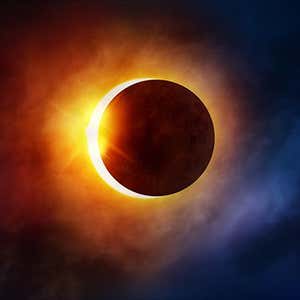
Solar Eclipse 2024
On 8 April a total solar eclipse will pass over Mexico, the US and Canada. Our special series is covering everything you need to know, from how and when to see it to some of the weirdest eclipse experiences in history.
Darkness, Baily’s beads and the first diamond ring
Just before totality, the final 0.1 per cent of the sun disappears and the light levels crash. Now come the beads. “In the few seconds before and after totality, one may see Baily’s beads as the last bits of the sun can be seen shining through the moon’s irregular surface,” says Maloney. The final bead shines like a jewel for a second, just as the sun’s corona appears, creating a brief “diamond ring” effect around the moon. It is safe to look at the diamond ring without eclipse glasses, but most observers miss it because they still have them on.
Solar corona
Here it comes – one of the most glorious sights in all of nature. “During totality, when the sun’s photosphere is eclipsed, the other parts of the sun’s atmosphere, the white corona and the pink-purple chromosphere, become visible,” says Maloney. Darkness has arrived and you can safely remove your eclipse glasses and look with your naked eyes at the corona, which is expected to be spiky and star-like because the sun is nearing its most active phase of its cycle. You will see wispy extended tendrils in the corona, if you have binoculars.
Pinkish-red chromosphere and prominences
At the onset and just before the end of totality, you will see the chromosphere, the lower region of the sun’s atmosphere, as a pinkish band that disappears mid-eclipse and remerges on the other side as the moon moves across the sun. You are also likely to see prominences, pinkish-red towers, or loops of plasma and magnetic field structures protruding from the corona visible around the moon.
The second diamond ring
The most impactful diamond ring effect comes at the end of totality. Tiny beads of sunlight appear between the moon’s mountains and valleys before merging into one bright diamond ring, the appearance of which marks the end of totality. It is safe to look at for a few seconds, but as daylight returns it is necessary to put eclipse glasses back on if you want to continue looking at the partial phases.
As totality ends, shadow bands can sometimes be seen again. You will have at least another hour to watch the sun, and any sunspots, slowly being uncovered – with your eclipse glasses back on, of course.
Topics:
